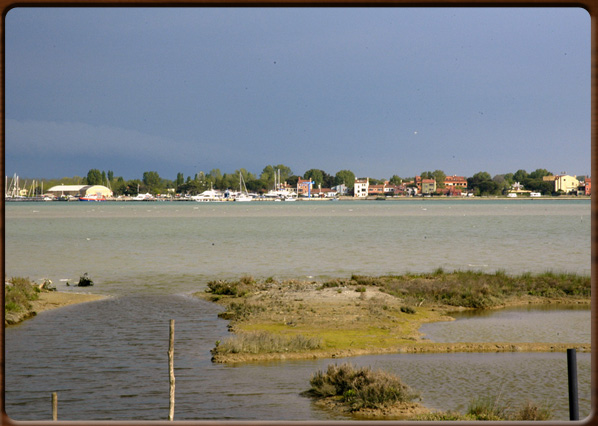
Isle of Sant'Erasmo as seen from the lagoon.

Violet artichokes from Sant'Erasmo.

The orchards of the island.

The Massimiliana Tower, 1830-44.




No video
Sant’Erasmo is the largest island in the North of the lagoon, more than 4 km long. Already inhabited in 792, over the centuries the island has been mainly used for agricultural purposes (and still is today), especially fruit and vegetables. In fact the island is known as the market-garden of Venice, with artichokes and green vegetables the main crops.
The island was partially fortified in the early 1800s. An example of the defences is Torre Massimiliana, built by the Austrians in 1830-1844 on the site of a former French fort (Forte di Sant’Erasmo). Surrounded by a moat and high embankments, it used to defend the island’s southern beaches. It was named after its inventor, Archduke Maximilian Joseph of Austria, who developed an experimental study for circular fortifications.
After a period of abandon, the Consorzio Venezia Nuova has recently restored the island’s buildings and defences. The sandy area to the East of the island is used by locals and so is known as “la spiaggia dei Veneziani” (the Beach of the Venetians).
400 - 1000 - ISOLE - rev. 0.1.5